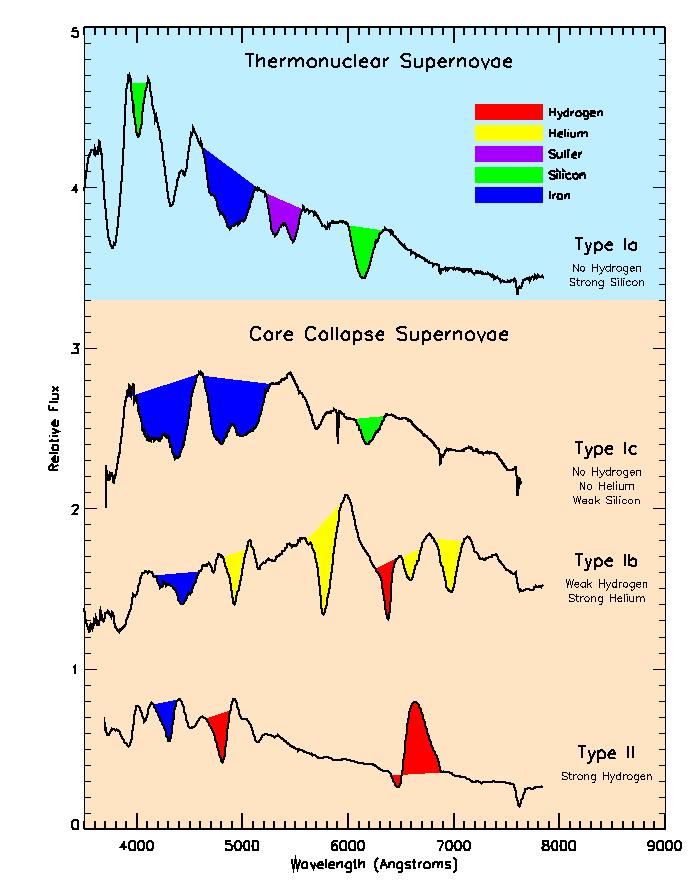-
-
Notifications
You must be signed in to change notification settings - Fork 405
GSOC 2014 ideas for TARDIS
If you are interested in participating, please join our mailing list, tardis-sn-dev, and also fill out this application form. More detailed information below.
A supernova marks the brilliant death throes of a star, during which it outshines its entire galaxy. It not only marks death, though: supernova ejecta change the evolution of the universe and enable the formation of planets and life as we know it. From the iron in your blood to the gold in your jewellery, supernovae return heavy elements assembled from the primordial hydrogen and helium left after the big bang.
There are still many mysteries surrounding supernovae (e.g. their precise origins, inner workings, ...). One way to study these objects in more detail is to split the light coming from these objects into its components (like using a prism) and analysing the resulting data (which is called a spectrum).
A major part of the analysis is to compare with computer simulations of how we think these objects work. TARDIS is a code that can simulate spectra from inputs like supernova brightness, amount of Oxygen, amount of Silicon, etc. The idea is that if we put in the parameters that actually describe the supernovae the generated spectrum will closely match the observed spectrum.
TARDIS aims to be an easy to use piece of software for research and training purposes. Unlike many other scientific codes, we have purposefully made it open-source. This enables scientists to use the code to analyze their observations, but also review the code and potentially fix errors.
TARDIS is participating in the Google Summer of Code 2014 under the Python organization. See here for information about participating as part of the Python organization, in particular the guidelines for prospective students. In particular, please note the following requirements:
All prospective students are required to have completed the following to pass final screening:
- Demonstrate to your prospective mentor(s) that you are able to complete the project you've proposed
- Blog for their GSoC project. Free blogs are available at http://www.blogger.com/
- Contribute at least one patch to the project(s) you're applying to work with
Students are expected to work (remotely) on the project full time this summer, and receive a $5,500 stipend! More information is available via the Python organization page on expectations from students, as well as the application process.
If you are interested in participating, please join our mailing list, tardis-sn-dev, and also fill out this application form. You are more than welcome to introduce yourself on the list and discuss the planned contribution. We can then pair you up with a prospective mentor to help you prepare your application.
Below are ideas of projects for students. For any questions about the projects, please ask on our mailing list. If you have ideas of other projects, please also feel free to suggest these (but well in advance, so we have time to discuss possible plans)!
Difficulty: Advanced
Astronomy knowledge needed: None/Low
Programming skills: Python Cython
Description: TARDIS is split into two main parts. The main simulation part - for reasons of computational expedience in two parts - is written in cython. Cython (http://cython.org/) is a dialect of python that can be converted into compiled into fast C-code. Currently, the code works and is reasonably fast, but there are several ways to optimize it. This project would ask you to find a way to make the code faster. Python knowledge is essential, Cython knowledge is an advantage.
Difficulty: Moderate - Advanced
Astronomy knowledge needed: None/Low
Programming skills: Python Cython Web
Description One of the goals of TARDIS is to make it easy to use. The second project involves designing a web interface that lets users setup the input for TARDIS and subsequently send of the simulation to a cluster. This way users do not have to install the software and can still use it to compare their data or teach with this tool.
